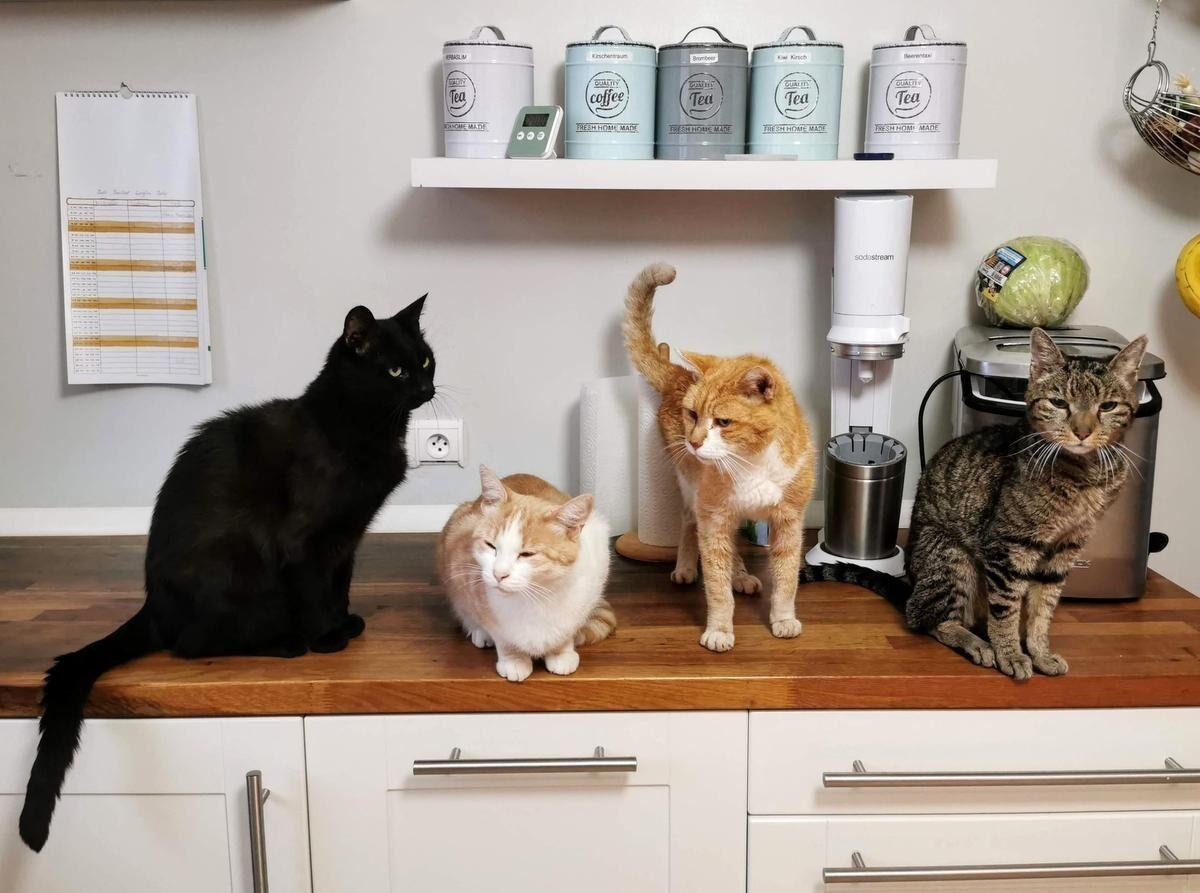
why do cats purr?

Cats purr for a variety of reasons, reflecting a range of emotional, physiological, and communicative functions. Here are some of the key reasons why cats purr:
Contentment and Happiness
Cats often purr when they are in a state of contentment or happiness. This can be observed when they are in a warm, familiar environment, being petted, eating, or lying in their owner's lap. The purring in these situations is typically accompanied by relaxed body language and facial expressions345.
Communication and Social Interaction
Purring serves as a form of communication, particularly between a mother cat and her kittens. Kittens can purr as young as a few days old to signal their location and well-being to their mother. Adult cats also use purring to communicate with other cats and humans, such as when greeting or seeking attention234.
Anxiety and Stress
Cats may purr when they are anxious or stressed. This can be a coping mechanism to help reduce their anxiety, such as during veterinary visits or other stressful situations. The purring in these cases can be a self-soothing behavior34.
Hunger or Need for Attention
Some cats purr when they are hungry or seeking food, often combining the purr with a cry or mew. This type of purr, known as a "solicitation purr," is distinguishable from other types of purrs and is more urgent and less pleasant to human ears123.
Relief and Healing
Purring has been linked to several health benefits for cats. The low-frequency vibrations produced by purring can help in healing bones and wounds, building muscle, repairing tendons, easing breathing, and lessening pain and swelling. This may explain why cats often purr when they are hurt or in pain124.
Maternal Bonding
Mother cats use purring as a way to bond with their kittens and to reassure them. This behavior continues into adulthood, with cats sometimes purring in situations that remind them of their maternal care123.
Physiological Mechanism
The mechanism behind purring involves the rapid dilation and constriction of the glottis (the opening between the vocal folds) during breathing, which creates the purring sound. This process is voluntary and involves the use of the laryngeal muscles and the diaphragm. Recent studies suggest that purring might be a passive phenomenon initiated by the brain but sustained through self-sustaining oscillation235.
In summary, purring in cats is a multifaceted behavior that can indicate happiness, anxiety, communication, need for attention, and even self-healing. Understanding the context and body language of the cat can help in determining the reason behind the purring.